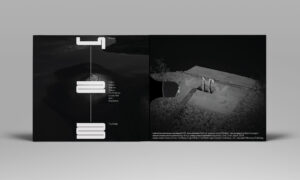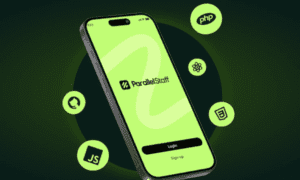In the dynamic realm of graphic design, one often underappreciated hero wields remarkable influence in captivating, conveying emotions, and facilitating communication—typography. From the understated grace of serifs to the assertive statements made by sans-serifs, fonts exert undeniable impact on information perception and navigation through visual experiences. Join us as we delve into the intricacies of fonts in this blog post, shedding light on why typography holds significance in graphic design and how it can truly enhance creative endeavors. Prepare to embark on a typographic journey like no other!
Introduction to Typography
Typography plays a pivotal role in graphic design for several compelling reasons. Primarily, it serves as a mode of communication, transmitting distinct messages and emotions to the audience, whether consciously recognized or not. Secondly, typography aids in establishing hierarchy and order within designs, crucial for emphasizing key information. Lastly, excellent typography simply enhances aesthetics, transforming designs from mundane to magnificent.
If you are new to the world of typography, fret not; this article covers all the fundamentals. We will commence by examining various typeface attributes, including serifs and sans serifs. Subsequently, we will discuss font pairing and the selection of appropriate font sizes and line heights for your design. By the article’s conclusion, you will have a comprehensive grasp of the elements that constitute remarkable typography.
The History of Typography
While a Google search might suggest that the history of typography commenced with Johannes Gutenberg’s mid-15th-century printing press, its roots run much deeper, extending to the dawn of written language. The history of typography is an intriguing narrative, replete with captivating tales, remarkable personalities, and pivotal developments that have shaped our contemporary world.
This article will guide you through key junctures in typography’s evolution, from its earliest origins to the present day. We will explore how typography has evolved over millennia, continually confronting new challenges and opportunities.
Let’s commence this exploration by venturing into the annals of one of graphic design’s most vital facets—typography.
The origins of written language trace back to approximately 3200 BCE, as early Sumerians employed pictographs for recording trade transactions. By 2600 BCE, these pictographs had evolved into cuneiform script, serving various purposes such as record keeping, communication, and literature.
Around 1000 BCE, China introduced a form of written language consisting of characters representing words rather than pictures. This innovation, more efficient than cuneiform, gained popularity across East Asia.
By 600 BCE, ancient Greece had developed alphabetic writing, which remains in use today, facilitating the creation of intricate written works.
Johannes Gutenberg’s mid-15th-century invention of the printing press revolutionized typography. The utilization of movable type enabled rapid, precise text replication and dissemination across vast distances, sparking a demand for diverse typefaces in various styles and sizes.
The 18th century witnessed pivotal typography advancements, including John Baskerville’s serif typeface introduction and William Caslon’s italic font development. Publishers also experimented with employing multiple fonts within a single page layout during this period.
In the 19th century, technological progress made typesetting faster and more accessible than ever. This era saw the proliferation of diverse typefaces, including sans-serif designs like Akzidenz Grotesk, alongside a heightened focus on legibility and readability.
Presently, typography permeates our daily lives, adorning websites, books, signs, and advertisements. While technology simplifies typesetting, designers persist in pushing the boundaries of creative possibility.
Understanding Fonts and Typography Styles
In graphic design, typography is an indispensable element. Fonts and typography styles serve as potent tools for conveying information about your brand or product and cultivating specific moods or atmospheres. Thoughtful font and typography style selection can significantly influence the overall appearance and feel of your design.
Numerous fonts and typography styles are available, necessitating thorough research before finalizing your choice. Take the time to explore different font families, considering factors like readability, legibility, personality, and style. Once you’ve narrowed down your options, experiment with font combinations and typography styles to identify the best fit for your project.
Remember that simplicity often proves more effective when working with fonts and typography. Excessive font variety can lead to clutter and chaos within your design. Restrict yourself to one or two primary fonts, employing additional fonts sparingly for emphasis. With some trial and error, you’ll discover the perfect blend of fonts and typography styles for your next undertaking.
How Fonts Impact Visual Design
Fonts may not be top of mind for the average person, but they wield substantial influence over design. The choice of font can transform the entire aesthetic of your project, demanding careful consideration. In this article, we delve into fonts and their influence on visual design.
Different fonts convey distinct messages. For instance, a playful font may suit a children’s book, while a more formal font aligns with corporate websites. An inappropriate font choice can render your design amateurish or outdated, underscoring the importance of careful selection.
In addition to conveying a message, fonts inject visual interest into designs. Each font possesses its unique personality, allowing designers to infuse projects with style and character. By selecting intriguing fonts, you can impart personality and flair to your work.
Fonts also impact design readability. For text-heavy content, opt for easily readable fonts. For projects with less text, decorative fonts can add charm. Always assess your design with various fonts to find the ideal match.
Trends in Font Design
Recent years have witnessed notable trends in font design. A prominent trend involves the increased use of sans-serif fonts, deemed more modern and sleek compared to their serif counterparts. Another trend centers on hand-drawn or brush-style fonts, which introduce a personal touch and evoke vintage or rustic aesthetics.
Additionally, popular font design trends encompass unique display fonts, monoline fonts, and script fonts. Display fonts typically adorn headlines and substantial text, while monoline fonts offer clean and simple designs. Script fonts infuse elegance and grace, often gracing formal documents like wedding invitations.
Tips for Selecting the Right Fonts for Your Projects
In the realm of graphic design, typography commands a pivotal role. The choice of fonts can either elevate or diminish a project’s impact, underscoring the need for judicious selection. Consider the following tips when choosing fonts for your projects:
Align with your message:
Choose fonts that resonate with your project’s tone and message. Serious or formal projects call for fonts that mirror that sentiment, avoiding playful or juvenile fonts.
Prioritize readability:
Your chosen font should facilitate easy reading, both in print and on screen. Avoid overly intricate or convoluted fonts that hinder comprehension.
Limit font variety:
Excessive fonts can clutter your design. Restrict yourself to two or three fonts at most, using them sparingly across your project.
Utilize contrast effectively:
Contrasting fonts can enhance visual appeal, but excessive contrast may distract. Pair bold fonts with more subtle ones to strike the right balance.
Test and refine:
Before finalizing your font selection, experiment with different options to assess their compatibility. Vary font sizes and styles to identify the most suitable combination.
Examples of Impactful Typography in Graphic Design
Typography plays an indispensable role in graphic design, serving as the primary medium for conveying messages to the audience. Effective typography can elevate a design’s impact significantly. Here are some examples of graphic designs with impactful typography:
Contrast for emphasis:
To ensure text stands out and remains legible within a design, leverage contrasting colors. Dark text on light backgrounds or vice versa enhances readability. Additionally, varying fonts or font weights (bold, italic, etc.) can create visually compelling contrast.
Establish hierarchy through size and placement:
Crafting a hierarchy within your design by manipulating text size and placement is key. Use larger, prominently placed text for headlines and reserve smaller, less prominent text for body content. This guides the reader’s attention and ensures vital information is not overlooked.
Embrace white space:
Incorporate white space or negative space effectively to prevent overwhelming the viewer with excessive text. This space need not be white but should provide breathing room within your design, enhancing readability and overall polish.
Conclusion
Typography stands as a cornerstone of graphic design, wielding the power to communicate messages effectively to the audience. With astute font choices and combinations, designers can create visually stunning compositions that captivate viewers and convey ideas seamlessly. By mastering typography, you can infuse an extra layer of creativity and personality into your design projects.
In addition to font selection, attention to layout is vital. Arranging text and images in an aesthetically pleasing and legible manner ensures your message is clear and engaging. A thorough understanding of font weights and sizes further empowers you to craft designs that fulfill their intended purpose. Given the plethora of fonts available, designers possess abundant options to unleash their creative potential.
Recognizing typography’s importance in graphic design enables designers to craft visually appealing, meaningful designs without overwhelming or confusing viewers. Typography should not be underestimated; it constitutes an essential facet of designing for both print and digital media, enhancing the entire creative process.



































